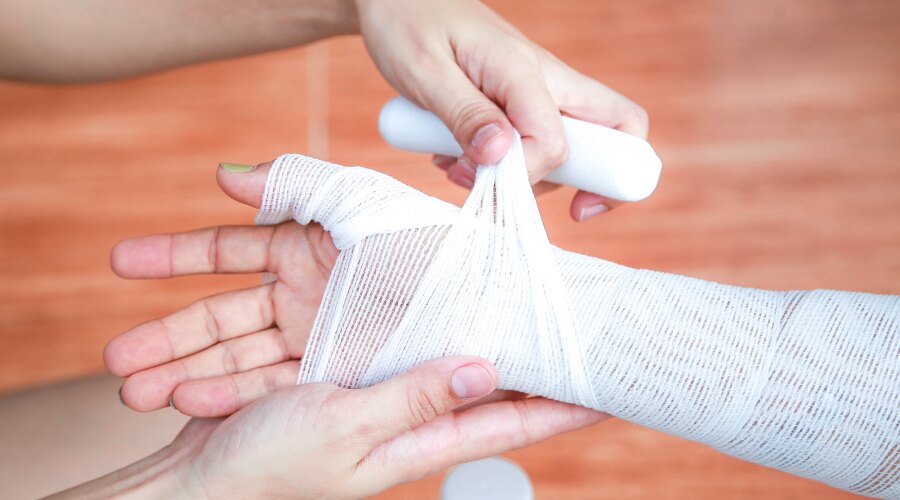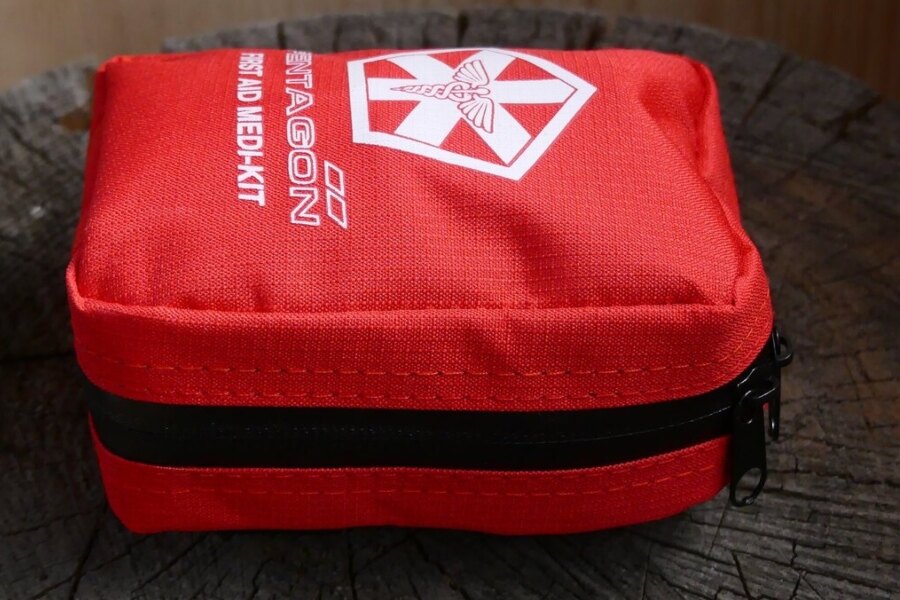Burns - what to do and what to carry in your first aid kit
Burns are serious and unfortunately a relatively common injury. The best protection is therefore an effective prevention. But when trouble does occur, a quick and right reaction is often decisive. So what is the first aid for a burn and what equipment is good to have in your first aid kit?
Sometimes you might spill a hot soup on yourself. Sometimes it is hot coffee from your vacuum bottle. You may be clumsy when adding gasoline to your lighter or your clothes might catch fire when moving too close to a campfire - synthetic parts of clothes burn really well... At that moment, a big trouble is at hand and you need to react fast.
No old wives' tales!
Before we get to what to do, let's talk about what not to do. Forget about all the old wives' tales. Yogurt, fat, onions or cucumbers definitely do not belong on a burn. An exception are 1st degree burns, which only show as redness or slight swelling (e.g. sunburn) - in this case, however, the Panthenol cream will do the trick.
Creams, oils or previously recommended powders are not very good options either. It is the powders that can cause the burn to dry out too much and stick to the cover. Burns often reach deep into the skin, so nothing but clean water belongs on it.
How to assess the severity of a burn?
In this article, we will skip the classification of burns into the classic three degrees. A burn develops over time, so its classification may not be unambiguous. Under stress (mainly in field conditions) determining the degree of burn will be difficult and can cause unnecessary confusion and delay. Determining the degree of burn has no effect on the first aid procedure, and for the subsequent treatment the most important information is whether we deal with a superficial or deep burn.

A woman treating a burn injury
The seriousness of a burn also depends on its extent. To determine it, for example, the rule of the palm will help - where the surface of the palm, including all fingers, corresponds approximately to 1% of the body surface. Attention, we are talking about the injured person's palm!
Serious burns:
- Adults: > 20 %
- Children 2-10 years: > 10 %
- Children up to 2 years: > 5 %
Another important aspect is location of the burn. Always call ambulance for the following burns:
- In sensitive body parts: head, neck, genitals, soles of feet and larger burns on palms.
- Size is bigger than two palms.
- Deep burn – large blisters, upper layer of skin peeling off, skin is white, waxy or bright red. Low or no pain.
- Clothes burnt into the skin.
- Round burn – e.g. around the arm, leg, neck. The burn may deepen, swell and complicate blood supply and innervation.
- Airways burns.
Do not overthink calling an ambulance. It is always better to overestimate a burn than to underestimate it. If you have any doubts, make sure you make the call.
What to do
The procedure is the same for burns of all degrees – get the burned person out of harm's way and away from the heat source and initiate cooling as quickly as possible.
- First of all, make sure you are safe and out of danger.
- Avoid further exposure to heat. If a person is on fire, try to push him to the ground and smother the fire. You can throw a blanket over it - but be careful, it should be a good old woolen blanket, synthetics are flammable.
- If you spill hot liquid on yourself, remove the affected clothing immediately. Do not pull off the clothing stuck to your skin, leave this to the doctor, instead, cool the burn through this clothing
- Cool the burn immediately! Start cooling even before you call the emergency. Speed is key here as the burn can continue to develop. You can read about how to cool properly in the following subsection.
- Also, remove all rings, bracelets, watches and other strangulating objects from the injured person as soon as possible. Affected areas will swell.
- If a burn is serious (or you suspect it to be serious), call ambulance.
In an urban environment it will all be over with the arrival of an ambulance. In an outdoor environment, however, the ambulance may not reach you as quickly, so it will be necessary to cover the wound to prevent infection. How to do it?
- Cover the cooled burn with a sterile cover.
- You can either use a material that will not stick to the wound, or apply a burn gel or oily tulle to the burn and then cover it
Even cooling has its principles
You can read various tips on how to perform cooling from various sources. As we said at the beginning, we will leave the old wives' tales aside, the best way to cool down a burn is using clean water, which won't introduce an infection into the body.
- If the burn area is smaller, cool to relief. There is no need to follow the 10, 15 or more minute rule. If the feeling of burning returns, repeat the cooling.
- On the other hand, extensive burns need to be cooled at once and intensively. Repeat as needed. Prolonged cooling could cause hypothermia, which comes on very quickly, especially in small children.
- For the same reason, cool both the torso and head also at once.
- Water should be cold, but not icy.
- The stream of water should not be aimed directly at the wound, but slightly above it, so that the water could flow over the affected area.
Tip: Have you heard that snow does not belong on a burn? It is true. But what is allowed in an emergency is to cool the snow down in a vacuum bottle with tea. But the tea must not be sweetened!
What to carry on you?

Pentagon Tactical First Aid Kit
Who is prepared is not surprised. A burn can happen very quickly, so you if do not have a "burn kit" in your first aid, make sure you add some of the following:
- Oily tulle and sterile cover. Oily tulle is a light fabric impregnated with pure medical petroleum jelly (without active ingredients) and is used in the treatment of injuries. Prevents the dressing from sticking to an open wound. Makes dressing changes easier. The use of this combination is therefore very versatile.
- WaterJel or Hydrogel. Cooling and healing gels that prevent infection. Apply a thicker layer on to the burned skin, but do not rub.
- Leinatex. This aluminum-coated non-woven fabric absorbs excess liquid, but does not stick to the wound. Makes dressing changes easier.
- Atrauman. A compress with ointment without active ingredients.
In order for the burn to heal as good as possible, it is necessary to tend to it and change the dressings on a regular basis. But the best burn is the one that never happened. Therefore, always think about prevention, especially for small children.
Article made in collaboration with Mrs. Dita Valtr Podhadská.
Readers are further interested












































































































































